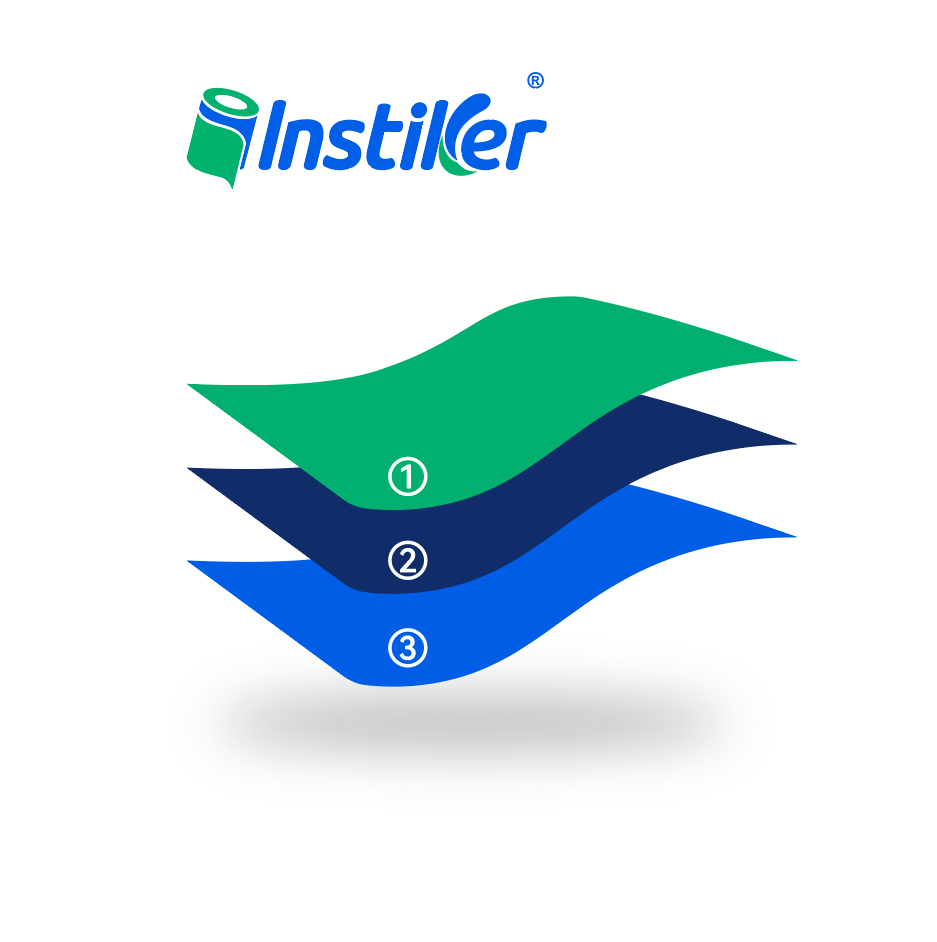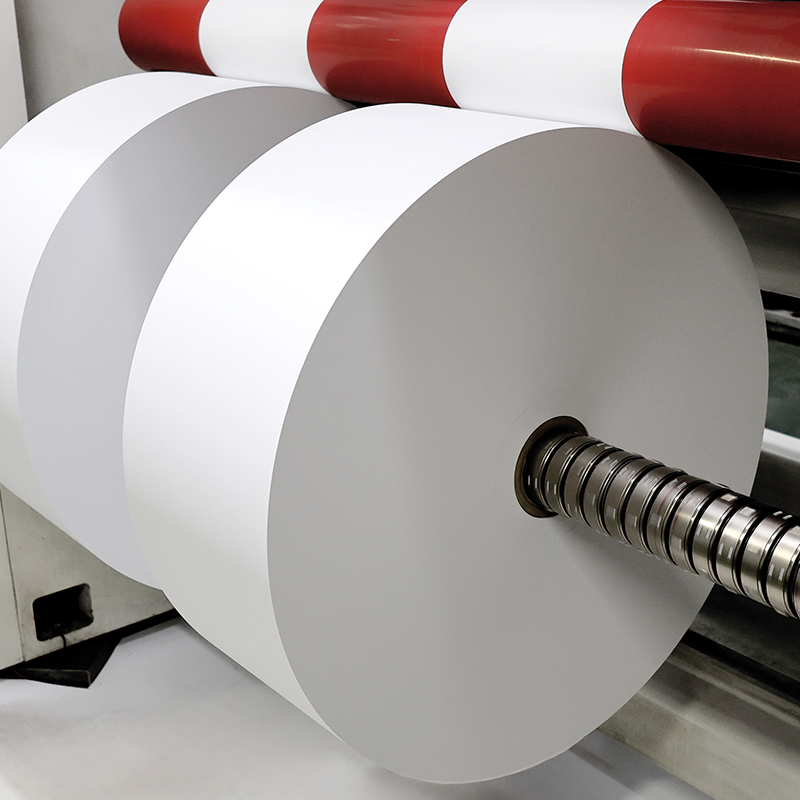












YH20325
Instiker
| Color: | |
|---|---|
| Size: | |
| Material: | |
| Application: | |
| Availability: | |
| Quantity: | |

Product Name: 50μm Yellow PET Solvent 60g White Glassine
1. Face Stock: Yellow PET
Caliper (μm): 58±5% GB/T 451.3-2003
Weight (g/㎡): 79±5% GB/T 451.2-2002
2. Adhesive Performance: Solvent
Initial Adhesion (N): 8.06 FTM 9
20 min.180'Peel Adhesion (N/25mm) : 15.67 FTM 1
20 min.90'Peel Adhesion (N/25mm): 10.25 FTM 2
Storage Temperature: -15°C to 80°C
Minimum Lakelling Temperature: 10°C
3. Liner: White Glassine
Caliper (μm): 65±5% GB/T 451.3-2003
Weight (g/㎡): 80±5% GB/T 451.3-2003
It can be stored for 1 year at the temperature of 23+2°C and relative humidity of 50+5%
The yellow PET self-adhesive label material is made from a PET film as the base material. It achieves uniform color by adding a special yellow color masterbatch or by applying a yellow coating on the surface. The backside is coated with a pressure-sensitive adhesive layer, and it is then combined with a release liner to form a self-adhesive label material.
After undergoing light and temperature resistance tests, after 6 months of exposure to ultraviolet rays (intensity 30W/m²), the color fading grade was ≤ 1 level (in accordance with GB/T 1865 standard); within the temperature range of -40℃ to 130℃, there was no color migration or color change, thus avoiding the deterioration of the label appearance due to environmental factors, and suitable for identification requirements in long-term outdoor or harsh environments.
*Industrial and safety field: Warning labels for hazardous areas of equipment, safety exit indicators, medium identification for pipelines
*Packaging industry: Food packaging labels; cosmetic packaging decoration
*Electronic and automotive industry: Warning labels for electronic products, temperature-resistant and anti-static properties suitable for the usage environment of electronic devices; Interior labels for automobiles
Q: Is this label fully recyclable?
A: Yes, the synthetic face stock and recycled kraft liner are both recyclable in plastic and paper streams, respectively. Remove adhesive residue before recycling.
Q: Can it be composted?
A: The face stock and adhesive are certified for industrial composting (OK Compost Industrial), breaking down into organic matter within 12 weeks under controlled conditions.
Q: How does it compare to traditional paper labels in wet environments?
A: The synthetic fibers repel water, making it 300% more moisture-resistant than kraft or paper labels, ideal for refrigerated or outdoor applications.
Q: Does the eco-friendly adhesive affect bonding strength?
A: No, the plant-based adhesive matches the performance of traditional acrylic adhesives, with a peel adhesion of 10N/25mm on stainless steel, ensuring reliable substrate bonding.



Product Name: 50μm Yellow PET Solvent 60g White Glassine
1. Face Stock: Yellow PET
Caliper (μm): 58±5% GB/T 451.3-2003
Weight (g/㎡): 79±5% GB/T 451.2-2002
2. Adhesive Performance: Solvent
Initial Adhesion (N): 8.06 FTM 9
20 min.180'Peel Adhesion (N/25mm) : 15.67 FTM 1
20 min.90'Peel Adhesion (N/25mm): 10.25 FTM 2
Storage Temperature: -15°C to 80°C
Minimum Lakelling Temperature: 10°C
3. Liner: White Glassine
Caliper (μm): 65±5% GB/T 451.3-2003
Weight (g/㎡): 80±5% GB/T 451.3-2003
It can be stored for 1 year at the temperature of 23+2°C and relative humidity of 50+5%
The yellow PET self-adhesive label material is made from a PET film as the base material. It achieves uniform color by adding a special yellow color masterbatch or by applying a yellow coating on the surface. The backside is coated with a pressure-sensitive adhesive layer, and it is then combined with a release liner to form a self-adhesive label material.
After undergoing light and temperature resistance tests, after 6 months of exposure to ultraviolet rays (intensity 30W/m²), the color fading grade was ≤ 1 level (in accordance with GB/T 1865 standard); within the temperature range of -40℃ to 130℃, there was no color migration or color change, thus avoiding the deterioration of the label appearance due to environmental factors, and suitable for identification requirements in long-term outdoor or harsh environments.
*Industrial and safety field: Warning labels for hazardous areas of equipment, safety exit indicators, medium identification for pipelines
*Packaging industry: Food packaging labels; cosmetic packaging decoration
*Electronic and automotive industry: Warning labels for electronic products, temperature-resistant and anti-static properties suitable for the usage environment of electronic devices; Interior labels for automobiles
Q: Is this label fully recyclable?
A: Yes, the synthetic face stock and recycled kraft liner are both recyclable in plastic and paper streams, respectively. Remove adhesive residue before recycling.
Q: Can it be composted?
A: The face stock and adhesive are certified for industrial composting (OK Compost Industrial), breaking down into organic matter within 12 weeks under controlled conditions.
Q: How does it compare to traditional paper labels in wet environments?
A: The synthetic fibers repel water, making it 300% more moisture-resistant than kraft or paper labels, ideal for refrigerated or outdoor applications.
Q: Does the eco-friendly adhesive affect bonding strength?
A: No, the plant-based adhesive matches the performance of traditional acrylic adhesives, with a peel adhesion of 10N/25mm on stainless steel, ensuring reliable substrate bonding.


Yellow PET (polyethylene terephthalate) is a thermoplastic polyester polymer material polymerized from terephthalic acid (PTA) and ethylene glycol (EG). Its yellow appearance is usually formed by adding organic or inorganic pigments, dyes, or introducing chromogenic groups (such as nitrogen and sulfur-containing compounds) during the polymerization process. The color of yellow PET comes from colorants outside the molecular structure or trace impurities/modified components during the polymerization process. Essentially, it still belongs to the PET polymer system.
oil-based adhesive is a type of adhesive that uses oil-based solvents (such as toluene, xylene, etc.) as the dispersion medium. It is mainly made by dissolving synthetic rubber (such as chloroprene rubber, nitrile rubber, etc.) or natural rubber in organic solvents. Its essence is to cross-link and solidify rubber molecules through solvent evaporation, thereby achieving a bonding effect. It belongs to a type of traditional adhesive.
The 60g white glassine liner protects the acrylic adhesive during storage and transportation. Its smooth surface allows for easy release of the label, which is essential for efficient application in high - volume production settings.

Yellow PET (polyethylene terephthalate) is a thermoplastic polyester polymer material polymerized from terephthalic acid (PTA) and ethylene glycol (EG). Its yellow appearance is usually formed by adding organic or inorganic pigments, dyes, or introducing chromogenic groups (such as nitrogen and sulfur-containing compounds) during the polymerization process. The color of yellow PET comes from colorants outside the molecular structure or trace impurities/modified components during the polymerization process. Essentially, it still belongs to the PET polymer system.
oil-based adhesive is a type of adhesive that uses oil-based solvents (such as toluene, xylene, etc.) as the dispersion medium. It is mainly made by dissolving synthetic rubber (such as chloroprene rubber, nitrile rubber, etc.) or natural rubber in organic solvents. Its essence is to cross-link and solidify rubber molecules through solvent evaporation, thereby achieving a bonding effect. It belongs to a type of traditional adhesive.
The 60g white glassine liner protects the acrylic adhesive during storage and transportation. Its smooth surface allows for easy release of the label, which is essential for efficient application in high - volume production settings.

Due to the excellent printing performance of PET stickers, it is suitable for letterpress, screen printing, offset printing, flexographic printing to produce various exquisite labels. It also has good performance for special labels.
Due to the excellent printing performance of PET stickers, it is suitable for letterpress, screen printing, offset printing, flexographic printing to produce various exquisite labels. It also has good performance for special labels.